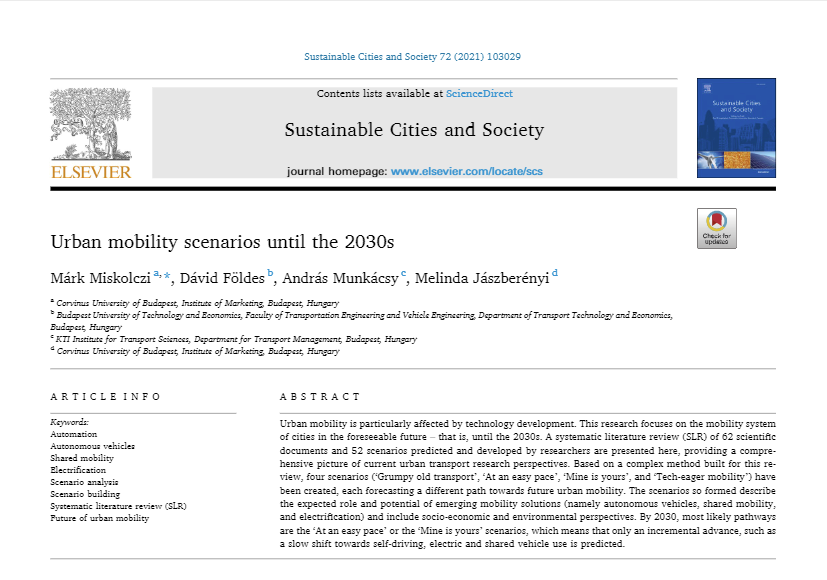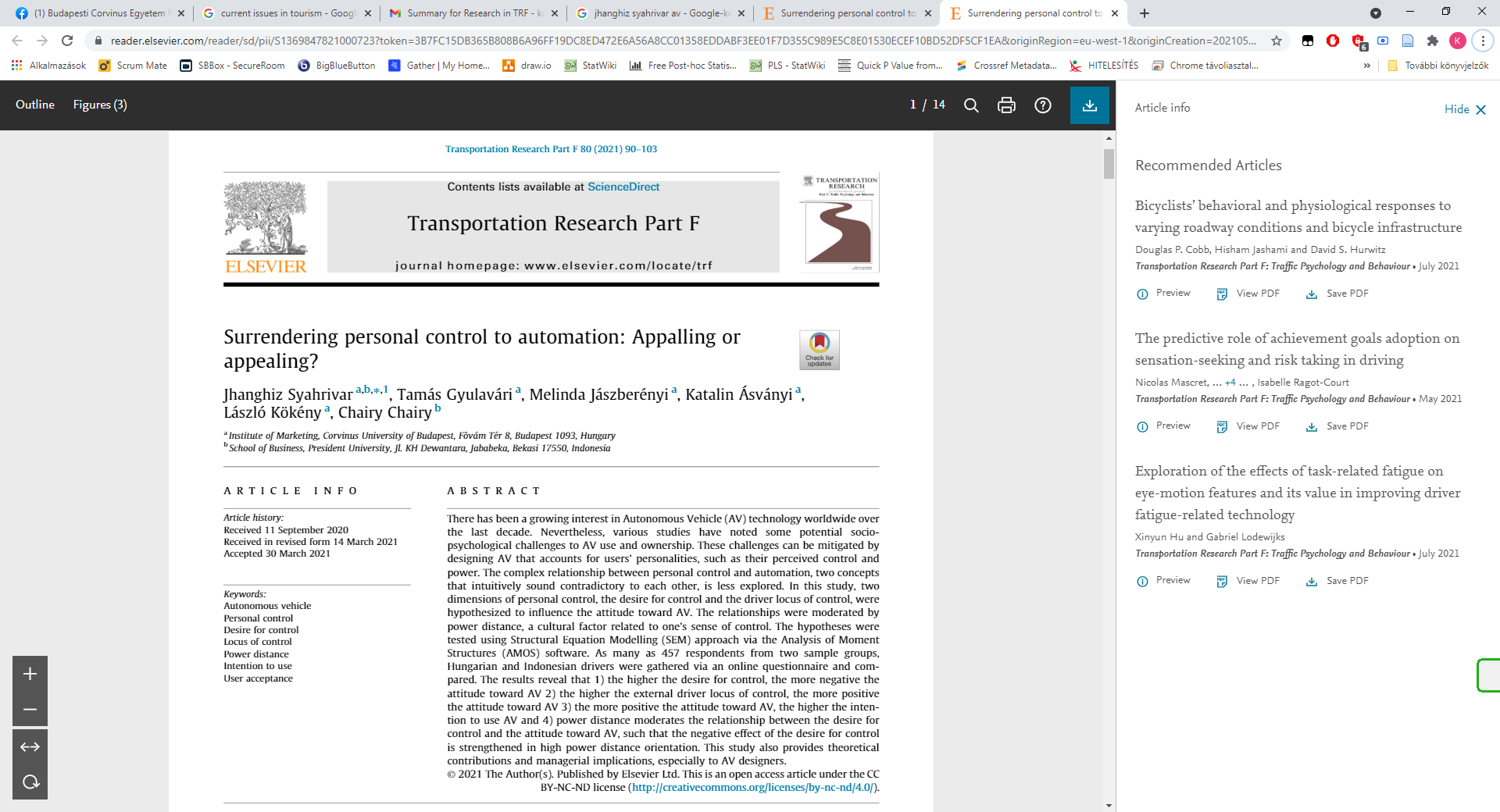CUB’s Tourism Training and Research Centre: Recent Publications
CUB’s Tourism Training and Research Centre (BCE Turizmus Továbbképző és Kutatóközpont) – led by Melinda Jászberényi – has been researching the social and economic impacts of autonomous vehicles for almost 2 years.CUB’s Tourism Training and Research Centre (BCE Turizmus Továbbképző és Kutatóközpont) – led by Melinda Jászberényi – has been researching the social and economic impacts of autonomous vehicles for almost 2 years. The research group works in two teams since the research focus is separated into two subthemes: transport-related impacts of the innovation (e.g., alterations in the field of urban passenger transport, mobility habits in general) and the marketing aspects of the research (e.g., technology-acceptance of autonomous vehicles).
In recent months, the Research Centre has published in several prestigious journals in the framework of the project supported by the National Research, Development, and Innovation Fund of Hungary, financed under the Tématerületi Kiválósági Programme Funding Scheme.
a) A systematic literature review (SLR) was recently published in the multidisciplinary, Q1-ranked journal Sustainable Cities and Society.
Our study outlines four scenarios (Grumpy old transport, At an easy pace, Mine is yours, Tech-eager mobility) for the future development of urban passenger transport applying a multi-criteria scenario analysis method we have developed.
The abstract of the paper:
Urban mobility is particularly affected by technology development. This research focuses on the mobility system of cities in the foreseeable future – that is, until the 2030s. A systematic literature review (SLR) of 62 scientific documents and 52 scenarios predicted and developed by researchers are presented here, providing a comprehensive picture of current urban transport research perspectives. Based on a complex method built for this review, four scenarios (‘Grumpy old transport’, ‘At an easy pace’, ‘Mine is yours’, and ‘Tech-eager mobility’) have been created, each forecasting a different path towards future urban mobility. The scenarios so formed describe the expected role and potential of emerging mobility solutions (namely autonomous vehicles, shared mobility, and electrification) and include socio-economic and environmental perspectives. By 2030, most likely pathways are the ‘At an easy pace’ or the ‘Mine is yours’ scenarios, which means that only an incremental advance, such as a slow shift towards self-driving, electric and shared vehicle use is predicted.
The journal article is available here.

The journal article is available here.
b) Surrendering personal control to automation: Appalling or appealing?
Jhanghiz Syahrivar1,2, Tamás Gyulavári1, Melinda Jászberényi1, Katalin Ásványi1, László Kökény*, & Chairy Chairy**
* Institute of Marketing, Corvinus University of Budapest, Hungary
** School of Business, President University, Indonesia
This paper was accepted and published in Transportation Research Part F: Traffic Psychology and Behaviour, a Q1 Scopus journal, in March 2021. This research was an international cooperation between Corvinus University of Budapest and the School of Business, President University, Indonesia.
The paper discusses the complex relationship between personal control and automation, two concepts that intuitively sound contradictory to each other. In this study, two dimensions of personal control, the desire for control and the driver locus of control, were hypothesized to influence the attitude toward Autonomous Vehicle (AV). The relationships were moderated by power distance, a cultural factor related to one’s sense of control. The hypotheses were tested using Structural Equation Modelling (SEM) approach via AMOS software. As many as 457 respondents from two sample groups, Hungarian and Indonesian drivers, were gathered via an online questionnaire and compared. The study reveals that 1) the higher the desire for control, the more negative the attitude toward AV 2) the higher the external driver locus of control, the more positive the attitude toward AV 3) the more positive the attitude toward AV, the higher the intention to use AV and 4) power distance moderates the relationship between the desire for control and the attitude toward AV, such that the negative effect of the desire for control is strengthened in high power distance orientation. This study also reveals that Indonesian drivers have a more positive attitude toward AV and a higher intention to use AV. Nonetheless, when compared to Hungarian drivers, Indonesian drivers prefer a lower level of automation.
The journal article is available here.
